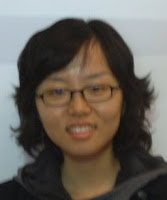
Sorry for the delay in getting up the timetable options - I've been busy working on a new blog called Daejeon What's On which is an offshoot of KAIST What's On.
As I have mentioned in class, what you need to do is to pick a day from the option below for the Tuesday and Thursday classes in May. There will be three positions for each class each day with Class 1 seminars running from 16:00 to 17:15 and Class 2 seminars running from 17:30 to 18:45.
Please note even if you are not giving a presentaion you will still be required to attend at least one of the seminar session each day. This hopefully will be a good opportunity to see how other people have gone about writing their abstracts and Powerpoint Presentions. It will also of course in addition be a good opportunity to see how people deliver their presentations and to practice asking pertinant, searching and/or witty questions.
I will put up more information about the genres other than the scientific report you might wish to present in the next couple of days so keep checking.
For now just indicate by email the session you are hoping to present in and I'll update the program as emails come in. If you have any questions just leave them in the comments and I'll answer them there.
Day/Class Presenters
-----------------------------------------
1st May [Thursday]
Class 1:
Class 2: 1. Lee Joonsuk
-----------------------------------------
6th May [Tuesday]
Class 1: Kim Tae-dong; 2. Chan SeongKyung
Class 2: 1. Jeon NamHo; 2. Tran Ngoc Tung; 3. Yun Hyeok
-----------------------------------------
8th May [Thursday]
Class 1: 1. Park Sunyoung; 2. Yoo Jeongsik; 3. Hwang Chulsoon
Class 2: 1. Oktay Yarimaga; 2. Park Hyun-hee; 3. Kim Bo A
-----------------------------------------
13th May [Tuesday]
Class 1: 1. Kim Bomi; 2. Vo Van Quang; 3. Pak Jiwoo; 3. Mao Wentao
Class 2: 1. Han Songhee; 2. Ha Heonjoo; 3. Park Hyun-hee
-----------------------------------------
15th May [Thursday]
Class 1: 1. Cho Heyrim; 2. Lee Jin Young; 3. Choe Jeehyun
Class 2: 1. Celal Avci; 2. Youn Jae Sang; 3. Han Seungchan
-----------------------------------------
20nd May [Tuesday]
Class 1: 1. Im SangHui; 2. Kim Yong-Min; 3. Kim Sung Wook
Class 2: 1. Kang Seungmo; 2. Sah YoungJune; 3. Eugene Park
-----------------------------------------
22nd May [Thursday]
Class 1: 1. Lee Boram; 2. Ahn Seomin; 3. Lee JungWoo
Class 2: 1. Woo Seong-woo; 2. Nikolay Tsvetkov; 3. Oh Hyojung
-----------------------------------------
ttseminarS08,














































